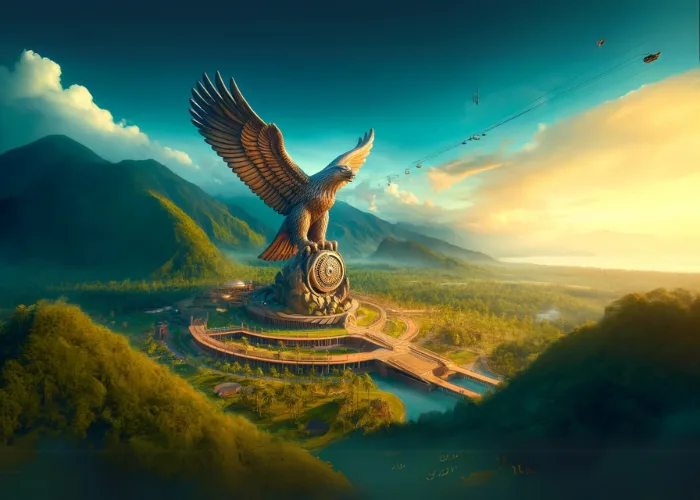Brihadeeswarar Temple: Thanjavur's Timeless Wonder
Brihadeeswarar Temple: A Journey Through Time and Architecture
Imagine stepping into a world where history, architecture, and spirituality converge, creating an awe-inspiring spectacle that leaves you mesmerised. Welcome to the Brihadeeswarar Temple in Thanjavur, a place where time stands still and whispers tales of a glorious past. Whether you are a history buff, an architecture enthusiast, or simply a curious traveller, this temple promises an unforgettable journey through time.
Introduction
Nestled in the heart of Tamil Nadu, the big temple of Thanjavur, also known as the Brihadeeswarar Temple, is a monumental example of Tamil architecture. Built over a thousand years ago by the Chola dynasty, this temple stands as a testament to their architectural prowess and artistic vision. But what makes this temple truly remarkable? Let's embark on a journey to explore the fascinating history, stunning architecture, and the cultural significance of this magnificent temple.
Brihadeeswarar Temple History
Historical Background
The history of Brihadeeswarar Temple is as grand as its architecture. Commissioned by the great Chola emperor Rajaraja Chola I in 1010 AD, this temple was constructed to honour Lord Shiva. The temple, also known as the Brihadisvara Temple at Thanjavur, showcases the grandeur and might of the Chola empire. Rajaraja Chola I envisioned a temple that would reflect his power and devotion, and what stands today is a fulfilment of that vision.
Cultural Significance
The temple is not just a place of worship; it's a symbol of the cultural renaissance that took place during the Chola dynasty. It played a crucial role in the socio-cultural life of the time, serving as a centre for learning, art, and music. The inscriptions on the walls of the temple provide a detailed account of the administrative, economic, and social aspects of the Chola period, making it an invaluable resource for historians.
Mythology and Legends
Legend has it that the temple was built to fulfil a divine command received by Rajaraja Chola I in his dreams. The temple's grandeur is said to have been inspired by Mount Kailash, the abode of Lord Shiva. The divine connection adds a mystical aura to the temple, drawing devotees and tourists alike.
Architecture of Brihadeshwara Temple
Architectural Marvel
The Brihadeshwara Temple architecture is a splendid example of Dravidian style, characterised by its grand scale, intricate carvings, and symmetrical design. The temple is built entirely of granite, a feat that boggles the mind considering the tools and technology available at the time. The towering vimana (temple tower) soars to a height of 216 feet, making it one of the tallest in the world. This monumental structure is crowned by a massive stone dome weighing around 80 tonnes, a marvel of ancient engineering.
Key Features
- Vimana: The soaring tower is the most striking feature, adorned with intricate carvings depicting various deities and mythological scenes.
- Nandi Statue: The temple houses a colossal statue of Nandi, the sacred bull of Lord Shiva. This 20-foot-long statue is carved from a single piece of granite and is one of the largest of its kind.
- Frescoes and Sculptures: The walls of the temple are adorned with exquisite frescoes and sculptures that illustrate scenes from Hindu mythology and the life of Rajaraja Chola I.
Engineering Feats
The construction of the temple is an engineering marvel. The massive granite blocks used in its construction were transported from quarries located several kilometres away. It's believed that a specially constructed ramp was used to lift the enormous stone dome to the top of the vimana. The precision and skill involved in this feat of engineering are truly astonishing.
Exploring the Brihadeeswara Temple Complex
Main Sanctum
The heart of the Brihadeeswara Temple in Thanjavur is the main sanctum, where the majestic Shiva Lingam is enshrined. This Lingam, standing at about 12 feet high, is one of the largest in India. The sanctum is designed to allow natural light to illuminate the deity, creating a serene and spiritual atmosphere.
Surrounding Shrines
The temple complex is home to several other shrines dedicated to various deities, including Ganesha, Parvati, and Subrahmanya. Each shrine is a masterpiece in its own right, adorned with intricate carvings and sculptures that reflect the artistic excellence of the Chola period.
Art and Sculptures
The temple is a treasure trove of art and sculptures. The walls are decorated with detailed frescoes that depict scenes from Hindu mythology, including the stories of Lord Shiva, Parvati, and other deities. The sculptures are so lifelike that they seem to come alive, narrating tales of devotion and divine intervention.
Visiting the Brihadeeswarar Temple in Thanjavur
Location and Accessibility
Located in the town of Thanjavur in Tamil Nadu, the Brihadeshwara Temple location is easily accessible by various modes of transport. The nearest airport is Tiruchirappalli International Airport, about 55 km away. Thanjavur is well-connected by rail and road, making it convenient for travellers to reach the temple.
Best Time to Visit
The best time to visit the temple is between October and March when the weather is pleasant. Avoid the scorching summer months as temperatures can soar, making it uncomfortable to explore the temple complex.
Visitor Tips
- Dress Code: Since it's a place of worship, it's advisable to dress modestly. Traditional attire such as sarees for women and dhotis for men are appreciated.
- Photography: Photography is allowed in the temple complex, but refrain from taking pictures inside the sanctum.
- Guided Tours: Consider hiring a local guide to gain deeper insights into the history and architecture of the temple.
Thanjavur: Beyond the Big Temple
Other Attractions
While the Brihadeeswarar Temple is the crown jewel of Thanjavur, the town has much more to offer. Explore the Thanjavur Maratha Palace, a magnificent structure that houses the Saraswathi Mahal Library and the Art Gallery. The library is a treasure trove of ancient manuscripts and rare books. The Art Gallery showcases a stunning collection of Chola bronzes and artefacts.
Local Culture and Cuisine
Thanjavur is a vibrant hub of culture and tradition. The town is famous for its classical music and dance, particularly the Bharatanatyam. Don't miss the chance to experience a live performance if you visit during the festival season. The local cuisine is a delightful mix of flavours, with dishes like dosa, idli, and sambar being must-tries.
Thanjai Periya Kovil History in Tamil
Local Narratives
For Tamil-speaking readers, the thanjai periya kovil history in Tamil is an essential part of their cultural heritage. The temple, also known as the tanjore periya kovil, is a symbol of Tamil pride and identity. The inscriptions in Tamil on the temple walls provide a detailed account of the Chola dynasty's achievements and their contributions to Tamil literature and culture.
Cultural Context
The thanjavur temple history is intertwined with the region's cultural and political history. The temple has been a centre for Tamil culture and learning for centuries, hosting scholars, artists, and devotees from across the region. The temple's role in preserving and promoting Tamil culture cannot be overstated.
Conclusion
In summary, the Brihadeeswara Temple is not just a monument; it's a living testament to the grandeur of the Chola dynasty and the rich cultural heritage of Tamil Nadu. Its architectural brilliance, historical significance, and spiritual aura make it a must-visit destination for anyone exploring India. So, pack your bags and get ready to be transported back in time as you walk through the hallowed halls of the Brihadeeswarar Temple in Thanjavur.
As you leave this magnificent temple, you'll carry with you not just memories but a sense of awe and reverence for the timeless beauty and splendour of the Brihadeeswarar Temple. It's a journey that will stay with you long after you've left, inspiring you to explore more such treasures hidden in the annals of history.




